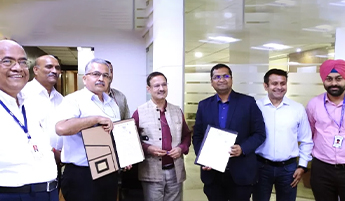Imagine capturing breathtaking photos with your smartphone or any digital camera, where every detail, color, and tone is perfectly balanced, delivering professional-quality images. All the camera OEMs and manufacturers understand that the magic lies in the type of hardware used, software optimization, image sensor configuration, and last but not least ISP (Image Signal Processor) tuning – a powerful procedure that ensures the camera generates acceptable images/videos under all lighting conditions.
Let’s dive deep into the world of ISP tuning, the science behind ISP, discover how it shapes the future of photography and imaging, explore VVDN’s expertise in ISP tuning, and understand how we assist global camera companies in perfecting ISP tuning for their next-gen cameras.
What is ISP Tuning and Why is it important?
Before delving into the importance of ISP Tuning, it’s essential to understand the role of an Image Signal Processor (ISP). ISP plays a pivotal role in optimizing and elevating the quality of images captured by various devices such as smartphones, digital cameras, and other imaging devices. ISP is responsible for calibrating and modifying parameters like exposure control, white balance correction, auto-focus, noise reduction, sharpness improvement, and more. ISP tuning is the process of optimizing the ISP and its various filters based on the image sensor, lens and the intended use case.
ISP Tuning Process
Let’s explore the step-by-step journey of ISP tuning:
- Characterization:
Sensor Analysis: The process begins with a thorough understanding of the image sensor’s characteristics, such as pixel size, sensitivity, dynamic range, and color filter array (CFA) pattern. This analysis helps in establishing a baseline for tuning parameters.
ISP Analysis: Evaluating the capabilities and limitations of the Image Signal Processor (ISP). This includes understanding the ISP’s processing pipeline, flexibility in tuning various modules, advanced algorithms, and other features that contribute to image quality.
- ISP Parameter Optimization:
Auto Exposure: AE tuning involves the creation of an appropriate exposure table as per the use case followed by tuning of exposure targets for different lux conditions. This ensures that the camera can achieve optimal brightness in any kind of lighting situation. Further, the smoothness of exposure transitions and AE convergence speed are also optimized.
White Balance Correction: Calibration and fine-tuning of the white balance algorithm so that the camera can reproduce accurate colors under illuminants of different color temperatures (CCT). Customizations can be done based on the preferences, e.g. to retain a slight warm/cool tint in frames.
Color Correction: Raw frames captured under controlled test conditions are used to generate color correction matrices and look-up tables. Color accuracy, color saturation, etc., are set per customer preferences or use cases of the camera. For example, smartphone cameras prefer more vibrant colors, but a security camera/medical equipment requires more accuracy. Other than color correction matrices, there are other modules available in the ISP pipeline where fine adjustments can be made for specific colors, skin color, etc.
Noise Reduction: Optimization of noise filters in spatial and temporal domains to minimize image noise, especially in low-light conditions. Balancing noise reduction without sacrificing image sharpness and avoiding ghost effects/moving object trails is crucial for achieving optimal image quality.
Sharpness Enhancement: Fine-tuning parameters related to image sharpness, including edge enhancement and detail preservation. This ensures that the camera captures high-frequency fine details and low-frequency edges in images.
- Benchmarking (IQ Validation/Testing):
Standardized Testing (Objective Testing): Rigorously testing the tuned camera against industry standards and benchmarks. This involves capturing images of standard test charts in controlled environments and evaluating performance metrics such as uniformity, resolution, dynamic range, color accuracy, noise levels, sharpness, and white balance errors through industry-accepted IQ analysis software.
Typically, capturing these images requires a lab setup with a uniform light source, test charts, and measuring equipment such as lux meters and chroma meters. The number of images to capture usually depends on the configuration of dynamic regions created for each of the ISP blocks based on lux levels, exposure time, sensor gains, and color temperatures.
Following initial tuning, comprehensive IQ testing is conducted to evaluate the camera’s performance. Standard test charts like X-rite MCC, ISO, and eSFR are captured under various lighting conditions, including 2000K to 7500K color temperatures and 1lux to 10000lux illumination levels. Test cases and IQ pass/fail criteria are tailored to the camera’s intended use case.
Real-world Testing (Subjective Testing): Assessing the camera’s performance in real-world scenarios, considering factors like varying lighting conditions, movement, skin tones, and high dynamic range scenes. The camera will be subjected to many test cases created specifically to its use case. This helps ensure the tuned camera meets user expectations in diverse scenarios.
- Feedback Loop: If benchmarking reveals areas for improvement, we need to return to the ISP parameter optimization phase to refine settings and address any identified issues. This iterative process continues until the camera consistently meets or exceeds the desired image quality standards.
Advantages of ISP Camera Tuning
ISP tuning offers several advantages, making it an indispensable process in the world of image capture and processing. Some benefits of ISP tuning include:
Enhanced Image Quality: Fine-tuning various ISP and 3A algorithm parameters according to the sensor and lens used results in the best image quality achievable with the given hardware and use case.
Consistency: By optimizing the camera’s performance, ISP tuning ensures consistent image quality across different lighting conditions and scenarios.
Competitive Edge: ISP-tuned cameras can outperform competitors in the market by delivering superior image quality and user satisfaction.
Customization: ISP tuning allows for customization, enabling manufacturers to cater to specific market preferences and needs.
Image Quality Assessment (IQA): The IQA results obtained from ISP tuning can be used to benchmark cameras or algorithms in the market, leading to further improvements.
ISP Tuning Results:

Before ISP Tuning 
After ISP Tuning
Why VVDN for ISP Tuning?
With extensive experience in working with cameras for multiple applications, including Security and Surveillance, Automotive, Medical, Consumer, Video Conferencing, and more, our team excels in fine-tuning cameras to achieve the best possible image quality for the intended application.
Our team has in-depth experience collaborating with a variety of camera platforms, including Qualcomm, Ambarella, NXP, TI, Intel, Mediatek, and sensors from renowned manufacturers such as Sony, Omnivision, and On Semiconductor.
We have made significant investments in establishing world-class, in-house image-tuning labs equipped with state-of-the-art tuning equipment. These labs are dedicated to advanced image quality tuning and camera calibration, utilizing best-in-class hardware and software tools to attain the desired output.
If you are seeking support in ISP Tuning, feel free to reach out to us at info@vvdntech.com.





















